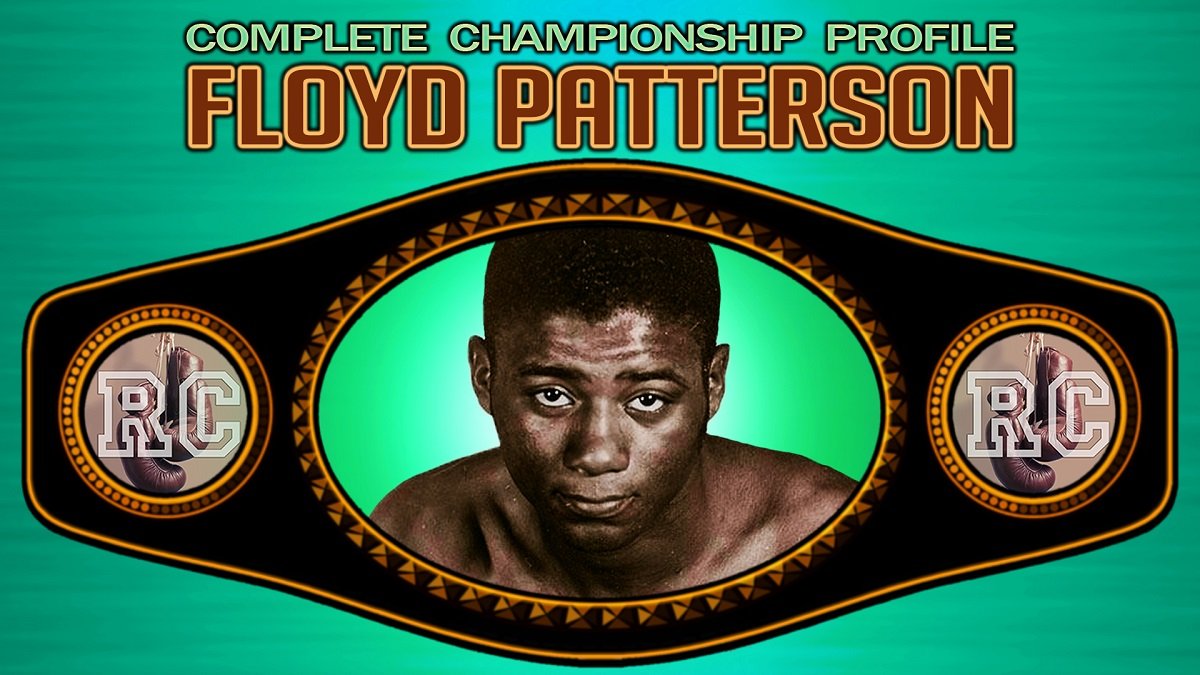Born on this day back in 1935, into an impoverished home that was nevertheless full of love as well as siblings, was Floyd Patterson – a future heavyweight king; one who would reign not once but twice. Patterson, born in Waco, North Carolina, would be “saved” by the sage Cus D’Amato long before Mike Tyson would be.
Patterson, a small heavyweight, a boxer who could have stayed at light heavyweight, this where the teenager began his pro career, instead battled the big men of his day. Floyd was a middleweight when he won gold at the Olympic Games held in Helsinki, and he never went above the 200 pound mark for any of his fights.

Despite this, the 5-11″ Patterson shared a ring with fellow greats, Muhammad Ali (twice), Sonny Liston (also twice), George Chuvalo, Jerry Quarry (twice yet again), and Oscar Bonavena.
Patterson is of course most famous, most celebrated, for becoming the first man in history to win the heavyweight championship twice. Floyd, having beaten the sage but outgunned Archie Moore to pick up the crown Rocky Marciano had vacated with his retirement, was then brutally relieved of the title by Swedish playboy Ingemar Johansson; this in 1959, with Patterson being violently smashed to the mat some seven times during the three-round hammering.
Patterson was ashamed of himself, and he began the act of donning a disguise with which to depart an arena if defeated. Patterson, a gifted, fast, clever and gusty fighter, was also a warrior who was anchored by a fragile psyche. Floyd always had a massive weight that was unequally spread across his shoulders in the ghastly form of self-doubt. There are stories, one which says a young Floyd, when pointing to a picture of himself while sitting with a family member (his mother?) said, “I don’t like him.”
Patterson would don a false beard and moustache when leaving the arena as a loser.
But in the return with Ingo, Patterson returned the violent favour, this by sending Johansson to the mat in brutal fashion one year after the first fight. This time, Johansson was left twitching on the canvas, his brief reign over.
Patterson then ran into, or was ran over by, Sonny Liston. Floyd, who had respect and a share of admiration for Liston when the majority of the American public had neither for the former jailbird who had mob ties, was slaughtered in a round in 1962. Then, in a 1963 rematch with the vastly misunderstood Liston, Patterson again failed to last three minutes.
Patterson could have retired right there, his contribution to boxing a significant one. Instead, Floyd fought on for nine more years.
Patterson, a wholly different entity to the new champ, Liston conqueror Cassius Clay – soon to be Muhammad Ali – was urged by many, Frank Sinatra included, to “regain the crown for America.” After battling through a hard period of depression that followed the dark days of the Liston losses, Patterson, still in his 20’s, strung together some darn good wins; over good men such as Eddie Machen and George Chuvalo.
Then Floyd fought Ali.
Entering the November 22, 1965 fight (this on the two-year anniversary of the JFK assassination), Floyd had a back injury. A serious one. Ali, who had labelled Patterson an “Uncle Tom,” utterly dominated the two-time champ, halting him inside 12 rounds of barbarity in a fight that ultimately failed to serve either fighter with anything good. Ali was lambasted by the press for torturing a wounded foe unnecessarily, while Patterson found himself turned on.
“Sinatra was very nice that morning, very encouraging, he told me I could win, how so many people were counting on me to win back the championship from Clay,” Patterson wrote when looking back on the day of the Ali fight.
“After I lost the fight, I paid Sinatra another visit in his suite. I told him I was sorry I let him down, and all the others, but Sinatra was a very different guy after I lost to Clay. I was talking to him in his suite and then he did a strange thing: He got up and walked away all the way to the other side of the room, and he sat down there, so far away I could hardly talk to him. I got the message. I left.”
Patterson was deeply hurt by the way Sinatra acted.
How many people have, and will, turn their backs on a beaten fighter? Shame on them, I say. But that’s a different story, a different sentiment.
Patterson fought on, beating British hero Henry Cooper, drawing with and then beating Jerry Quarry, and then losing to Jimmy Ellis. Patterson, by now aged 33, then strung up a nine-fight win streak – included here a win over Bonavena – before Floyd fought Ali again. The September, 1972 non-title fight signalled the end of Patterson’s career, with Ali this time stopping Floyd in seven rounds.
In retirement, Floyd became friends with Johansson, while he also became friendly with Ali. Patterson became a fine trainer and he also served as the New York State Athletic Commissioner.
Patterson died at age 71, this in May of 2006, a victim of both Alzheimer’s disease and prostate cancer.
Floyd was a shy, humble, giving person. A superb fighter with sublime skills, a ton of heart and amazing speed and reflexes, this former heavyweight champion, in his retirement years, would thank the fans who asked HIM for HIS autograph.
This sums up Floyd Patterson; as well as is paints a picture in terms of what a good guy this heavyweight king really, genuinely, absolutely was.
